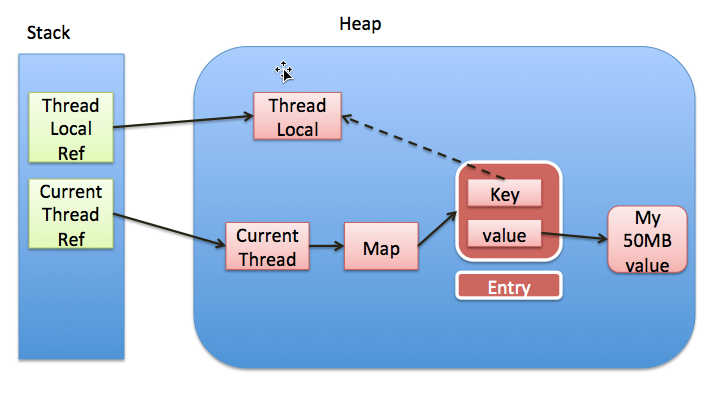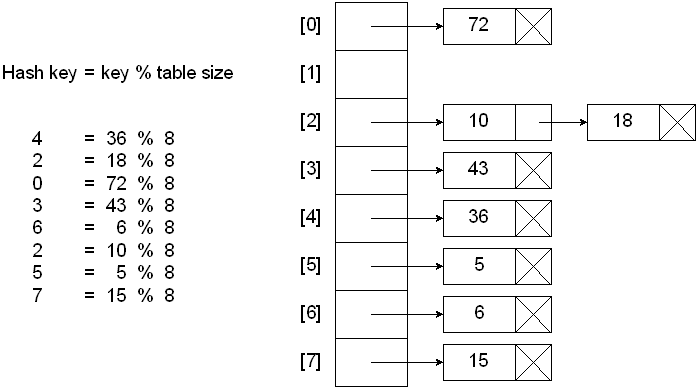Java 并发详解 ThreadLocal
Posted
tags:
篇首语:本文由小常识网(cha138.com)小编为大家整理,主要介绍了Java 并发详解 ThreadLocal相关的知识,希望对你有一定的参考价值。
前言
ThreadLocal 主要用来提供线程局部变量,也就是变量只对当前线程可见,本文主要记录一下对于 ThreadLocal 的理解。更多关于 Java 多线程的文章可以转到 这里。
线程局部变量
在多线程环境下,之所以会有并发问题,就是因为不同的线程会同时访问同一个共享变量,例如下面的形式
public class MultiThreadDemo { public static class Number { private int value = 0; public void increase() throws InterruptedException {
value = 10;
Thread.sleep(10);
System.out.println("increase value: " + value);
} public void decrease() throws InterruptedException {
value = -10;
Thread.sleep(10);
System.out.println("decrease value: " + value);
}
} public static void main(String[] args) throws InterruptedException { final Number number = new Number();
Thread increaseThread = new Thread(new Runnable() { @Override
public void run() { try {
number.increase();
} catch (InterruptedException e) {
e.printStackTrace();
}
}
});
Thread decreaseThread = new Thread(new Runnable() { @Override
public void run() { try {
number.decrease();
} catch (InterruptedException e) {
e.printStackTrace();
}
}
});
increaseThread.start();
decreaseThread.start();
}
}在上面的代码中,increase 线程和 decrease 线程会操作同一个 number 中 value,那么输出的结果是不可预测的,因为当前线程修改变量之后但是还没输出的时候,变量有可能被另外一个线程修改,下面是一种可能的情况:
increase value: 10decrease value: 10
一种解决方法是在 increase() 和 decrease() 方法上加上 synchronized 关键字进行同步,这种做法其实是将 value 的 赋值 和打印 包装成了一个原子操作,也就是说两者要么同时进行,要不都不进行,中间不会有额外的操作。我们换个角度考虑问题,如果 value 只属于 increase 线程或者 decrease 线程,而不是被两个线程共享,那么也不会出现竞争问题。一种比较常见的形式就是局部(local)变量(这里排除局部变量引用指向共享对象的情况),如下所示:
public void increase() throws InterruptedException { int value = 10;
Thread.sleep(10);
System.out.println("increase value: " + value);
}不论 value 值如何改变,都不会影响到其他线程,因为在每次调用 increase 方法时,都会创建一个 value 变量,该变量只对当前调用 increase 方法的线程可见。借助于这种思想,我们可以对每个线程创建一个共享变量的副本,该副本只对当前线程可见(可以认为是线程私有的变量),那么修改该副本变量时就不会影响到其他的线程。一个简单的思路是使用 Map 存储每个变量的副本,将当前线程的 id 作为 key,副本变量作为 value 值,下面是一个实现:
public class SimpleImpl { public static class CustomThreadLocal { private Map<Long, Integer> cacheMap = new HashMap<>(); private int defaultValue ; public CustomThreadLocal(int value) {
defaultValue = value;
} public Integer get() { long id = Thread.currentThread().getId(); if (cacheMap.containsKey(id)) { return cacheMap.get(id);
} return defaultValue;
} public void set(int value) { long id = Thread.currentThread().getId();
cacheMap.put(id, value);
}
} public static class Number { private CustomThreadLocal value = new CustomThreadLocal(0); public void increase() throws InterruptedException {
value.set(10);
Thread.sleep(10);
System.out.println("increase value: " + value.get());
} public void decrease() throws InterruptedException {
value.set(-10);
Thread.sleep(10);
System.out.println("decrease value: " + value.get());
}
} public static void main(String[] args) throws InterruptedException { final Number number = new Number();
Thread increaseThread = new Thread(new Runnable() { @Override
public void run() { try {
number.increase();
} catch (InterruptedException e) {
e.printStackTrace();
}
}
});
Thread decreaseThread = new Thread(new Runnable() { @Override
public void run() { try {
number.decrease();
} catch (InterruptedException e) {
e.printStackTrace();
}
}
});
increaseThread.start();
decreaseThread.start();
}
}但是上面的实现会存在下面的问题:
每个线程对应的副本变量的生命周期不是由线程决定的,而是由共享变量的生命周期决定的。在上面的例子中,即便线程执行完,只要
number变量存在,线程的副本变量依然会存在(存放在 number 的 cacheMap 中)。但是作为特定线程的副本变量,该变量的生命周期应该由线程决定,线程消亡之后,该变量也应该被回收。多个线程有可能会同时操作 cacheMap,需要对 cacheMap 进行同步处理。
为了解决上面的问题,我们换种思路,每个线程创建一个 Map,存放当前线程中副本变量,用 CustomThreadLocal 的实例作为 key 值,下面是一个示例:
public class SimpleImpl2 { public static class CommonThread extends Thread {
Map<Integer, Integer> cacheMap = new HashMap<>();
} public static class CustomThreadLocal { private int defaultValue; public CustomThreadLocal(int value) {
defaultValue = value;
} public Integer get() {
Integer id = this.hashCode();
Map<Integer, Integer> cacheMap = getMap(); if (cacheMap.containsKey(id)) { return cacheMap.get(id);
} return defaultValue;
} public void set(int value) {
Integer id = this.hashCode();
Map<Integer, Integer> cacheMap = getMap();
cacheMap.put(id, value);
} public Map<Integer, Integer> getMap() {
CommonThread thread = (CommonThread) Thread.currentThread(); return thread.cacheMap;
}
} public static class Number { private CustomThreadLocal value = new CustomThreadLocal(0); public void increase() throws InterruptedException {
value.set(10);
Thread.sleep(10);
System.out.println("increase value: " + value.get());
} public void decrease() throws InterruptedException {
value.set(-10);
Thread.sleep(10);
System.out.println("decrease value: " + value.get());
}
} public static void main(String[] args) throws InterruptedException { final Number number = new Number();
Thread increaseThread = new CommonThread() { @Override
public void run() { try {
number.increase();
} catch (InterruptedException e) {
e.printStackTrace();
}
}
};
Thread decreaseThread = new CommonThread() { @Override
public void run() { try {
number.decrease();
} catch (InterruptedException e) {
e.printStackTrace();
}
}
};
increaseThread.start();
decreaseThread.start();
}
}在上面的实现中,当线程消亡之后,线程中 cacheMap 也会被回收,它当中存放的副本变量也会被全部回收,并且 cacheMap 是线程私有的,不会出现多个线程同时访问一个 cacheMap 的情况。在 Java 中,ThreadLocal 类的实现就是采用的这种思想,注意只是思想,实际的实现和上面的并不一样。
使用示例
Java 使用 ThreadLocal 类来实现线程局部变量模式,ThreadLocal 使用 set 和 get 方法设置和获取变量,下面是函数原型:
public void set(T value);public T get();
下面是使用 ThreadLocal 的一个完整示例:
public class ThreadLocalDemo { private static ThreadLocal<Integer> threadLocal = new ThreadLocal<>(); private static int value = 0; public static class ThreadLocalThread implements Runnable { @Override
public void run() {
threadLocal.set((int)(Math.random() * 100));
value = (int) (Math.random() * 100); try {
Thread.sleep(2000);
} catch (InterruptedException e) {
e.printStackTrace();
}
System.out.printf(Thread.currentThread().getName() + ": threadLocal=%d, value=%d\n", threadLocal.get(), value);
}
} public static void main(String[] args) throws InterruptedException {
Thread thread = new Thread(new ThreadLocalThread());
Thread thread2 = new Thread(new ThreadLocalThread());
thread.start();
thread2.start();
thread.join();
thread2.join();
}
}下面是一种可能的输出:
Thread-0: threadLocal=87, value=15Thread-1: threadLocal=69, value=15
我们看到虽然 threadLocal 是静态变量,但是每个线程都有自己的值,不会受到其他线程的影响。
具体实现
ThreadLocal 的实现思想,我们在前面已经说了,每个线程维护一个 ThreadLocalMap 的映射表,映射表的 key 是 ThreadLocal 实例本身,value 是要存储的副本变量。ThreadLocal 实例本身并不存储值,它只是提供一个在当前线程中找到副本值的 key。 如下图所示:

图片来自 http://blog.xiaohansong.com/2016/08/06/ThreadLocal-memory-leak/
我们从下面三个方面看下 ThreadLocal 的实现:
存储线程副本变量的数据结构
如何存取线程副本变量
如何对 ThreadLocal 的实例进行 Hash
ThreadLocalMap
线程使用 ThreadLocalMap 来存储每个线程副本变量,它是 ThreadLocal 里的一个静态内部类。ThreadLocalMap 也是采用的散列表(Hash)思想来实现的,但是实现方式和 HashMap 不太一样。我们首先看下散列表的相关知识:
散列表
理想状态下,散列表就是一个包含关键字的固定大小的数组,通过使用散列函数,将关键字映射到数组的不同位置。下面是理想散列表的一个示意图:

在理想状态下,哈希函数可以将关键字均匀的分散到数组的不同位置,不会出现两个关键字散列值相同(假设关键字数量小于数组的大小)的情况。但是在实际使用中,经常会出现多个关键字散列值相同的情况(被映射到数组的同一个位置),我们将这种情况称为散列冲突。为了解决散列冲突,主要采用下面两种方式:
分离链表法(separate chaining)
开放定址法(open addressing)
分离链表法
分散链表法使用链表解决冲突,将散列值相同的元素都保存到一个链表中。当查询的时候,首先找到元素所在的链表,然后遍历链表查找对应的元素。下面是一个示意图:

图片来自 http://faculty.cs.niu.edu/~freedman/340/340notes/340hash.htm
开放定址法
开放定址法不会创建链表,当关键字散列到的数组单元已经被另外一个关键字占用的时候,就会尝试在数组中寻找其他的单元,直到找到一个空的单元。探测数组空单元的方式有很多,这里介绍一种最简单的 -- 线性探测法。线性探测法就是从冲突的数组单元开始,依次往后搜索空单元,如果到数组尾部,再从头开始搜索(环形查找)。如下图所示:

关于两种方式的比较,可以参考 这篇文章。ThreadLocalMap 中使用开放地址法来处理散列冲突,而 HashMap 中使用的分离链表法。之所以采用不同的方式主要是因为:在 ThreadLocalMap 中的散列值分散的十分均匀,很少会出现冲突。并且 ThreadLocalMap 经常需要清除无用的对象,使用纯数组更加方便。
实现
我们知道 Map 是一种 key-value 形式的数据结构,所以在散列数组中存储的元素也是 key-value 的形式。ThreadLocalMap 使用 Entry 类来存储数据,下面是该类的定义:
static class Entry extends WeakReference <ThreadLocal <?>> { /** The value associated with this ThreadLocal. */
Object value; Entry(ThreadLocal <?> k, Object v) { super(k);
value = v;
}
}Entry 将 ThreadLocal 实例作为 key,副本变量作为 value 存储起来。注意 Entry 中对于 ThreadLocal 实例的引用是一个弱引用,该引用定义在 Reference 类(WeakReference的父类)中,下面是 super(k) 最终调用的代码:
Reference(T referent) { this(referent, null);
}
Reference(T referent, ReferenceQueue <? super T> queue) { this.referent = referent; this.queue = (queue == null) ? ReferenceQueue.NULL : queue;
}关于弱引用和为什么使用弱引用可以参考 Java 理论与实践: 用弱引用堵住内存泄漏 和 深入分析 ThreadLocal 内存泄漏问题。下面看一下 ThreadLocalMap 的 set 函数
private void set(ThreadLocal <?> key, Object value) { // We don‘t use a fast path as with get() because it is at
// least as common to use set() to create new entries as
// it is to replace existing ones, in which case, a fast
// path would fail more often than not.
Entry[] tab = table; int len = tab.length; // 根据 ThreadLocal 的散列值,查找对应元素在数组中的位置
int i = key.threadLocalHashCode & (len - 1); // 使用线性探测法查找元素
for (Entry e = tab[i]; e != null; e = tab[i = nextIndex(i, len)]) {
ThreadLocal <?> k = e.get(); // ThreadLocal 对应的 key 存在,直接覆盖之前的值
if (k == key) {
e.value = value; return;
} // key为 null,但是值不为 null,说明之前的 ThreadLocal 对象已经被回收了,当前数组中的 Entry 是一个陈旧(stale)的元素
if (k == null) { // 用新元素替换陈旧的元素,这个方法进行了不少的垃圾清理动作,防止内存泄漏,具体可以看源代码,没看太懂
replaceStaleEntry(key, value, i); return;
}
} // ThreadLocal 对应的 key 不存在并且没有找到陈旧的元素,则在空元素的位置创建一个新的 Entry。
tab[i] = new Entry(key, value); int sz = ++size; // cleanSomeSlot 清理陈旧的 Entry(key == null),具体的参考源码。如果没有清理陈旧的 Entry 并且数组中的元素大于了阈值,则进行 rehash。
if (!cleanSomeSlots(i, sz) && sz >= threshold) rehash();
}关于 set 方法,有几点需要地方:
int i = key.threadLocalHashCode & (len - 1);,这里实际上是对 len-1 进行了取余操作。之所以能这样取余是因为 len 的值比较特殊,是 2 的 n 次方,减 1 之后低位变为全 1,高位变为全 0。例如 16,减 1 之后对应的二进制为: 00001111,这样其他数字中大于 16 的部分就会被 0 与掉,小于 16 的部分就会保留下来,就相当于取余了。在 replaceStaleEntry 和 cleanSomeSlots 方法中都会清理一些陈旧的 Entry,防止内存泄漏
threshold 的值大小为
threshold = len * 2 / 3;rehash 方法中首先会清理陈旧的 Entry,如果清理完之后元素数量仍然大于 threshold 的 3/4,则进行扩容操作(数组大小变为原来的 2倍)
private void rehash() {expungeStaleEntries();// Use lower threshold for doubling to avoid hysteresisif (size >= threshold - threshold / 4) resize(); }
我们再看一下 getEntry (没有 get 方法,就叫 getEntry)方法:
private Entry getEntry(ThreadLocal <?> key) { int i = key.threadLocalHashCode & (table.length - 1);
Entry e = table[i]; if (e != null && e.get() == key) return e; else
return getEntryAfterMiss(key, i, e);
}因为 ThreadLocalMap 中采用开放定址法,所以当前 key 的散列值和元素在数组中的索引并不一定完全对应。所以在 get 的时候,首先会看 key 的散列值对应的数组元素是否为要查找的元素,如果不是,再调用 getEntryAfterMiss 方法查找后面的元素。
private Entry getEntryAfterMiss(ThreadLocal <?> key, int i, Entry e) {
Entry[] tab = table; int len = tab.length; while (e != null) {
ThreadLocal < ? > k = e.get(); if (k == key) return e; if (k == null) expungeStaleEntry(i); else
i = nextIndex(i, len);
e = tab[i];
} return null;
}最后看一下删除操作。删除其实就是将 Entry 的键值设为 null,变为陈旧的 Entry。然后调用 expungeStaleEntry 清理陈旧的 Entry。
private void remove(ThreadLocal <?> key) {
Entry[] tab = table; int len = tab.length; int i = key.threadLocalHashCode & (len - 1); for (Entry e = tab[i]; e != null; e = tab[i = nextIndex(i, len)]) { if (e.get() == key) {
e.clear(); expungeStaleEntry(i); return;
}
}
}副本变量存取
前面说完了 ThreadLocalMap,副本变量的存取操作就很好理解了。下面是 ThreadLocal 中的 set 和 get 方法的实现:
public void set(T value) {
Thread t = Thread.currentThread();
ThreadLocalMap map = getMap(t); if (map != null)
map.set(this, value); else
createMap(t, value);
}public T get() {
Thread t = Thread.currentThread();
ThreadLocalMap map = getMap(t); if (map != null) {
ThreadLocalMap.Entry e = map.getEntry(this); if (e != null) { @SuppressWarnings("unchecked")
T result = (T) e.value; return result;
}
} return setInitialValue();
}存取的基本流程就是首先获得当前线程的 ThreadLocalMap,将 ThreadLocal 实例作为键值传入 Map,然后就是进行相关的变量存取工作了。线程中的 ThreadLocalMap 是懒加载的,只有真正的要存变量时才会调用 createMap 创建,下面是 createMap 的实现:
void createMap(Thread t, T firstValue) {
t.threadLocals = new ThreadLocalMap(this, firstValue);
}如果想要给 ThreadLocal 的副本变量设置初始值,需要重写 initialValue 方法,如下面的形式:
ThreadLocal <Integer> threadLocal = new ThreadLocal() { protected Integer initialValue() { return 0;
}
};ThreadLocal 散列值
当创建了一个 ThreadLocal 的实例后,它的散列值就已经确定了,下面是 ThreadLocal 中的实现:
/** * ThreadLocals rely on per-thread linear-probe hash maps attached * to each thread (Thread.threadLocals and * inheritableThreadLocals). The ThreadLocal objects act as keys, * searched via threadLocalHashCode. This is a custom hash code * (useful only within ThreadLocalMaps) that eliminates collisions * in the common case where consecutively constructed ThreadLocals * are used by the same threads, while remaining well-behaved in * less common cases. */private final int threadLocalHashCode = nextHashCode();/** * The next hash code to be given out. Updated atomically. Starts at * zero. */private static AtomicInteger nextHashCode = new AtomicInteger();/** * The difference between successively generated hash codes - turns * implicit sequential thread-local IDs into near-optimally spread * multiplicative hash values for power-of-two-sized tables. */private static final int HASH_INCREMENT = 0x61c88647;/** * Returns the next hash code. */private static int nextHashCode() { return nextHashCode.getAndAdd(HASH_INCREMENT);
}我们看到 threadLocalHashCode 是一个常量,它通过 nextHashCode() 函数产生。nextHashCode() 函数其实就是在一个 AtomicInteger 变量(初始值为0)的基础上每次累加 0x61c88647,使用 AtomicInteger 为了保证每次的加法是原子操作。而 0x61c88647 这个就比较神奇了,它可以使 hashcode 均匀的分布在大小为 2 的 N 次方的数组里。下面写个程序测试一下:
public static void main(String[] args) {
AtomicInteger hashCode = new AtomicInteger(); int hash_increment = 0x61c88647; int size = 16;
List <Integer> list = new ArrayList <> (); for (int i = 0; i < size; i++) {
list.add(hashCode.getAndAdd(hash_increment) & (size - 1));
}
System.out.println("original:" + list);
Collections.sort(list);
System.out.println("sort: " + list);
}我们将 size 设为 16,32 和 64 分别测试一下:
// size=16original:[0, 7, 14, 5, 12, 3, 10, 1, 8, 15, 6, 13, 4, 11, 2, 9]sort: [0, 1, 2, 3, 4, 5, 6, 7, 8, 9, 10, 11, 12, 13, 14, 15]// size=32original:[0, 7, 14, 21, 28, 3, 10, 17, 24, 31, 6, 13, 20, 27, 2, 9, 16, 23, 30, 5, 12, 19, 26, 1, 8, 15, 22, 29, 4, 11, 18, 25]sort: [0, 1, 2, 3, 4, 5, 6, 7, 8, 9, 10, 11, 12, 13, 14, 15, 16, 17, 18, 19, 20, 21, 22, 23, 24, 25, 26, 27, 28, 29, 30, 31]// size=64original:[0, 7, 14, 21, 28, 35, 42, 49, 56, 63, 6, 13, 20, 27, 34, 41, 48, 55, 62, 5, 12, 19, 26, 33, 40, 47, 54, 61, 4, 11, 18, 25, 32, 39, 46, 53, 60, 3, 10, 17, 24, 31, 38, 45, 52, 59, 2, 9, 16, 23, 30, 37, 44, 51, 58, 1, 8, 15, 22, 29, 36, 43, 50, 57]sort: [0, 1, 2, 3, 4, 5, 6, 7, 8, 9, 10, 11, 12, 13, 14, 15, 16, 17, 18, 19, 20, 21, 22, 23, 24, 25, 26, 27, 28, 29, 30, 31, 32, 33, 34, 35, 36, 37, 38, 39, 40, 41, 42, 43, 44, 45, 46, 47, 48, 49, 50, 51, 52, 53, 54, 55, 56, 57, 58, 59, 60, 61, 62, 63]
可以看到随着 size 的变化,hashcode 总能均匀的分布。其实这就是 Fibonacci Hashing,具体可以参考 这篇文章。所以虽然 ThreadLocal 的 hashcode 是固定的,当 ThreadLocalMap 中的散列表调整大小(变为原来的 2 倍)之后重新散列,hashcode 仍能均匀的分布在散列表中。
应用场景
最常见的ThreadLocal使用场景为 用来解决 数据库连接、Session管理等。如
private static ThreadLocal < Connection > connectionHolder = new ThreadLocal < Connection > () { public Connection initialValue() { return DriverManager.getConnection(DB_URL);
}
};public static Connection getConnection() { return connectionHolder.get();
}private static final ThreadLocal threadSession = new ThreadLocal();public static Session getSession() throws InfrastructureException {
Session s = (Session) threadSession.get(); try { if (s == null) {
s = getSessionFactory().openSession();
threadSession.set(s);
}
} catch (HibernateException ex) { throw new InfrastructureException(ex);
} return s;
}以上是关于Java 并发详解 ThreadLocal的主要内容,如果未能解决你的问题,请参考以下文章
Java并发编程——ThreadLocalAQS线程安全集合类
Java并发编程——ThreadLocalAQS线程安全集合类